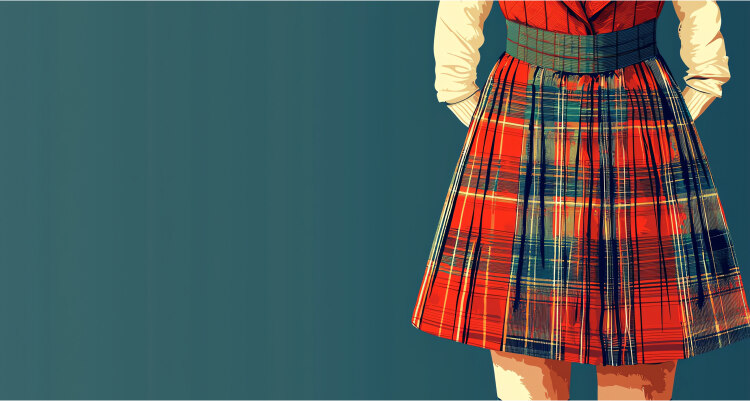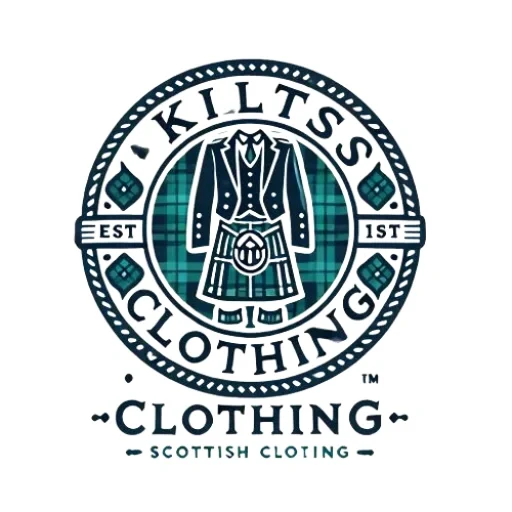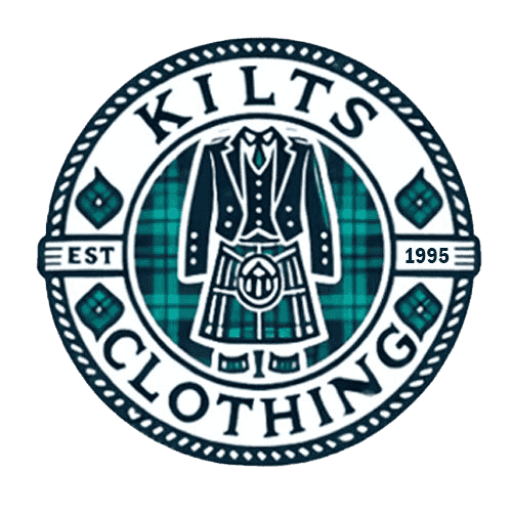Womens Kilt vs. Traditional Skirts: Which Is Right for You?

Introduction
Choosing the perfect skirt for your wardrobe can be challenging, especially when you're deciding between a womens kilt and a traditional dress. While they may look similar at first glance, kilts and skirts each have unique features, history, and styling options that make them suitable for different preferences and occasions. In this guide, we'll explore the main differences between womens kilts and traditional skirts, helping you understand which option is the best choice for you.
What is a womens kilt?
A womens kilt is a pleated, wrap-around garment with roots in Scottish culture. Traditionally worn by men, the kilt has evolved and become a popular choice for women as well. womens kilts typically feature a flat front panel, pleats in the back, and fasten with buckles or straps. They come in various lengths, colors, and patterns, with tartan (plaid) being the most popular choice. Kilts offer a structured look that is versatile enough to be worn for both casual and formal occasions.
Understanding Traditional Skirts
Traditional skirts come in many different styles, lengths, and fabrics, and they are one of the most common items in women's wardrobes worldwide. Unlike kilts, skirts generally don't have a wrap-around style or buckles; instead, they come in styles like A-line, pencil, maxi, and mini. Traditional skirts can be made from various fabrics, including cotton, polyester, silk, and wool, and they can be designed for any season, making them highly adaptable.
Key Differences Between womens kilts and Traditional Skirts
While both kilts and skirts are bottom-wear options for women, they have distinct features that set them apart. Here are some of the key differences:
- Structure and Fit: Kilts have a more structured and tailored fit, often featuring pleats and a flat front panel, while traditional skirts can be fitted or flowy, depending on the style.
- Design and Fastening: womens kilts typically fasten with buckles or straps and are wrapped around the body. Skirts, on the other hand, usually feature zippers, buttons, or elastic waistbands.
- Cultural Significance: Kilts have a deep-rooted cultural significance in Scotland and are often worn to celebrate Scottish heritage. Skirts don't carry specific cultural ties, making them more neutral in this regard.
- Versatility: Kilts are often considered more versatile in terms of transitioning between casual and formal occasions, while skirts can vary widely based on their style.
- Comfort and Practicality: Kilts can provide more structure and are great for cooler weather due to their heavy wool options, whereas skirts offer more options in lighter fabrics for warmer climates.
Styling a womens kilt
womens kilts are known for their versatility and can be styled in various ways. Here are some ideas for different occasions:
- Casual Outing: Pair a mini kilt with a fitted t-shirt and sneakers for a relaxed, comfortable look.
- Workwear: A knee-length kilt with a blouse and blazer creates a professional, sophisticated outfit.
- Formal Event: For formal events, go for a longer kilt and pair it with a dressy blouse and heels. Adding a brooch or sash can enhance the traditional look.
- Winter Look: In cooler months, a kilt paired with a cozy sweater, tights, and boots creates a warm yet stylish outfit.
Styling a Traditional Skirt
Traditional skirts come in many styles and can be worn in different ways. Here's how to style them:
- Everyday Casual: An A-line skirt with a casual top and flats is perfect for running errands or meeting friends.
- Office Look: Pencil skirts paired with a button-down shirt and heels create a classic business outfit.
- Evening Wear: For evening events, a silk or satin maxi skirt with a chic top can look elegant and sophisticated.
- Summer Style: In warmer weather, pair a flowy midi or mini skirt with a tank top and sandals for a breezy summer look.
Choosing the Right Option for Different Occasions
When deciding between a womens kilt and a traditional skirt, consider the occasion and the look you want to achieve.
- For Casual Wear: Both kilts and skirts can be worn casually. However, kilts with a simple tee or sweater offer a unique twist for a casual look. At the same time, traditional skirts like denim or A-line skirts provide a more typical casual outfit.
- For Work: A knee-length kilt with a tailored blouse or blazer works well for business settings, while pencil skirts are a go-to choice for most professional attire.
- For Formal Events: Kilts with traditional touches are ideal for formal events, especially those celebrating heritage. For general formal occasions, a maxi or satin skirt provides a sophisticated appearance.
- For Seasonal Wear: womens kilts, particularly in wool, are great for fall and winter, while skirts made from cotton or lighter fabrics are ideal for spring and summer.
womens kilt vs. Traditional Skirt Comparison Table
Feature | womens kilt | Traditional Skirt |
Structure | Structured with pleats and flat front panel | Varies: can be fitted, flowy, or structured |
Fastening | Buckles or straps | Zippers, buttons, or elastic waistband |
Common Lengths | Mini, knee-length, and longer | Mini, midi, knee-length, and maxi |
Best for | Both casual and formal settings | Casual, professional, or formal settings |
Cultural Significance | Strong Scottish heritage | No specific cultural association |
Fabric | Commonly wool, also cotton or blends | Wide variety (cotton, polyester, silk, etc.) |
Seasonal Use | Ideal for cooler months | Suitable for all seasons |
Care Tips for womens kilts and Traditional Skirts
Caring for your garments properly ensures they last longer. Here are some care tips for both kilts and skirts:
womens kilts
- Spot Clean When Needed: Wool kilts don't need frequent washing. Spot clean for minor stains and spills.
- Dry Clean for Best Results: Dry cleaning is recommended for wool kilts to maintain the fabric's quality and structure.
- Store Properly: Hang kilts on special kilt hangers to preserve the pleats and shape.
Traditional Skirts
- Read the Label: Traditional skirts are made from various materials, so always follow the washing instructions.
- Iron Carefully: Some fabrics may wrinkle, so use a low setting or steam to remove creases.
- Fold or Hang Based on Fabric: Light, flowy skirts can be folded, while structured skirts should be hung to keep their shape.
FAQs
Yes, women’s kilts come in various lengths and styles, making them versatile and flattering for different body shapes. The wrap-around structure and pleats allow for easy adjustments to fit comfortably, and you can choose a length that complements your height and body type.
Yes, you can wear a kilt in warm weather, especially if it’s made from a lighter fabric like cotton or a cotton blend. Shorter kilt styles, like mini kilts, are ideal for summer as they allow better airflow. Pair it with a light top for a comfortable, stylish summer look.
Both options have their versatility, but women’s kilts are especially versatile for transitioning between casual and formal settings, thanks to their unique structure and cultural appeal. Traditional skirts offer more variety in style and can be easier to find in a range of fabrics and lengths, making them adaptable to different occasions and seasons.
If your workplace is more formal or if you want to embrace a unique, structured look, a kilt paired with a blouse and blazer is an excellent choice. Traditional skirts, like pencil or A-line styles, may be more common in office settings, so consider the dress code of your workplace and your personal style preferences.


